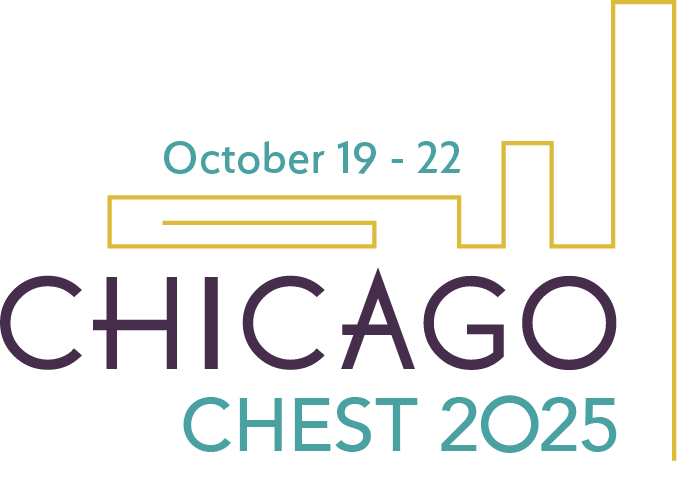
Interstitial lung disease (ILD) is a frequent complication of systemic autoimmune rheumatic diseases (SARDs) associated with considerable morbidity and mortality.1 The risk of ILD, however, is higher in a subset of SARDs—rheumatoid arthritis (RA), systemic sclerosis (SSc), idiopathic inflammatory myopathies (IIMs), mixed connective tissue disease (MCTD), and Sjögren’s disease (SjD). Prior to this year, guidelines for ILD screening, monitoring, and treatment in this high-risk population did not exist. Accordingly, the American College of Rheumatology (ACR) and American College of Chest Physicians (CHEST) jointly endorsed the recent publication of two separate guidelines detailing recommendations for (1) screening and monitoring and (2) treatment of ILD in adults with SARDs.2 3 These guidelines mark the first of their kind, aiming to promote multidisciplinary collaboration and comprehensive, standardized care. Below, we summarize the major highlights from these guidelines.
Screening and monitoring
For patients with SARD, who should be screened for ILD and how?

The prevalence of ILD is not equally distributed amongst those with SARDs, and the heterogeneity poses a challenge when creating guidelines applicable to all.4 The ACR/CHEST guidelines focus on recommendations for those with SARDs at highest risk of ILD (RA, SSc, IIM, MCTD, and SjD), while excluding pediatric SARDs, sarcoidosis, interstitial pneumonia with autoimmune features, vasculitides, systemic lupus erythematosus, and unclassifiable ILD.2 3 As the guidelines’ recommendations are all conditional and based on low-quality evidence, an individualized ILD screening approach should be implemented for patients with SARDs with regard to risk.
For patients with these high-risk SARDs, screening for ILD with pulmonary function testing (PFT) and high-resolution chest tomography (HRCT) is conditionally recommended at the time of diagnosis. This recommendation was founded on observational studies showing PFTs have low sensitivity and high specificity while HRCT has high sensitivity and low specificity for detection of ILD. The combination was also favored, as it provides complementary information on functional impact (PFTs) and radiologic pattern (HRCT).

The guideline committee conditionally recommended against several routine tests due to poor performance—chest radiography, six-minute walk distance, ambulatory desaturation testing, and bronchoscopy. There was a strong recommendation against pursuing surgical lung biopsy due to high-quality evidence for harm and low-quality evidence for benefit. If initial screening is negative, repeat screening is left to the discretion of the treating physician; nevertheless, for patients with high-risk features, yearly rescreening should be considered through shared decision-making.
How should patients with SARD-ILD be monitored?
Disease monitoring following a SARD-ILD diagnosis is important. PFTs and HRCT were conditionally recommended over PFTs alone; however, the consensus was that HRCT should be less frequent than PFTs. Ambulatory desaturation monitoring was also conditionally recommended. The committee conditionally recommended against chest radiography, six-minute walk distance, and bronchoscopy for screening.
The frequency of monitoring should be guided by patient symptoms, risk profile, and treatment response due to substantial clinical variation. For this reason, the committee made suggestions only to steer clinicians. For patients with IIM-ILD and SSc-ILD, more frequent PFT monitoring was suggested given the high risk of early, aggressive disease. For all SARD-ILDs, more frequent PFT monitoring was suggested early after diagnosis; less frequent testing should be considered for those with stable disease. No suggestion regarding the frequency of monitoring with HRCT was made; however, HRCT may be useful as a complementary test to PFTs in situations of uncertainty.
Treatment
First-line treatment
What are considerations when using glucocorticoids in patients with SARD-ILD?
The decision to treat SARD-ILD should incorporate patient symptoms, disease activity, risk of progression, and goals of care. For almost all SARD-ILDs, short-term glucocorticoids (ie, <3 months) are considered first-line treatment. The exception is SSc-ILD, for which there is a strong recommendation against glucocorticoids as first-line therapy due to concern for precipitating scleroderma renal crisis. Similarly, glucocorticoids should be used cautiously in those patients with MCTD and SSc features or IIM-ILD with SSc antibodies, though they are not strictly contraindicated.
What are the recommended options for a steroid-sparing approach?
An important goal in the treatment of SARD-ILD is tapering off glucocorticoids to avoid toxicity. Steroid-sparing is used for those requiring long-term immunosuppression. Considerations when choosing steroid-sparing agents include contraindications, side-effect profile, and effect on active extrapulmonary symptoms.
The committee conditionally recommended a hierarchy of first-line steroid-sparing agents via a voting consensus. Mycophenolate was conditionally recommended as the preferred agent in all SARD-ILDs for several reasons: (1) positive outcomes in trials of SSc-ILD, (2) additional limited data in other SARDs, (3) favorable side-effect profile, and (4) physicians’ familiarity. Multiple other first-line agents were recommended by disease type. These are summarized in Figure 1.
Progression on first-line treatment
What are considerations for patients with progression despite first-line ILD treatment?
The goal of first-line treatment is to improve or stabilize lung function and symptoms. Unfortunately, some patients with SARD-ILD will progress despite appropriate first-line therapy. Progression of ILD was defined using criteria from the INBUILD trial—a decline in FVC >10% predicted or a FVC decline between 5% and 10% accompanied by worsening respiratory symptoms or radiologic fibrosis within a 24-month period.5 When progression is diagnosed, the goal is to add on or switch to an agent based on patient-specific factors or preferences.
Short-term steroids may have a role, particularly if a patient is experiencing an acute exacerbation; however, long-term steroid therapy (at least three to six months) is not recommended. For those who are on full-dose, first-line therapy but still progressing, addition of an alternative agent should be considered. In some instances, addition of an antifibrotic agent is recommended. If progression continues despite multiple agents, referral for lung transplantation should be discussed.
What are some of the management options for patients with rapidly progressive ILD?
Rapidly progressive (RP)-ILD is considered when a patient exhibits rapid progression in supplemental oxygen needs within days to weeks without an alternative cause. First-line treatment is typically pulse IV methylprednisolone in addition to one to two other immunosuppressive medications; nonsteroidal immunosuppressive options include rituximab, cyclophosphamide, IV immunoglobulin, tacrolimus, mycophenolate, or Janus kinase inhibitors. The guidelines conditionally recommend double or triple therapy for most patients with SARD and RP-ILD (combination of steroids and one or two of the listed agents). For patients with confirmed or suspected anti-melanoma differentiation-associated gene 5 (MDA-5) RP-ILD, triple therapy is conditionally recommended (steroids and two additional agents) due to substantial risk of death. Of note, for patients with SSc and RP-ILD, there is no consensus on whether corticosteroids should be used. Treatment selection ultimately depends on disease severity, concern for infection, and suspected or confirmed MDA-5 RP-ILD. Finally, the committee recommended early referral for lung transplantation for patients whose disease progresses while on optimal medical treatment.
Conclusion
SARDs represent a diverse group of rheumatologic diseases associated with high risk of ILD. The ACR/CHEST guidelines are a first attempt to provide clinicians with evidence-based recommendations for screening, monitoring, and treatment of SARD-ILD. They represent an essential tool for management of SARD-ILD . The studies utilized to create them were mostly observational, and none had examined the relationship between disease screening, monitoring, and patient-centered outcomes. As a result, the recommendations are largely conditional. Additional studies are needed to examine the impact of surveillance in different populations, determine risk factors for RP-ILD in patients with SARD, and further investigate the most effective treatments.
Dr. Castellanos and Dr. Esposito are with the Division of Pulmonary and Critical Care, Department of Medicine, Feinberg School of Medicine, Northwestern University, Chicago, IL. Dr. Zhao is with the Department of Medicine, Feinberg School of Medicine, Northwestern University, Chicago, IL.
References
1. Fischer A, du Bois R. Interstitial lung disease in connective tissue disorders. Lancet. 2012;380(9842):689-698.
2. Johnson SR, Bernstein EJ, Bolster MB, et al. 2023 American College of Rheumatology (ACR)/American College of Chest Physicians (CHEST) guideline for the screening and monitoring of interstitial lung disease in people with systemic autoimmune rheumatic diseases. Arthritis Care Res. 2024;76(8):1070-1082.
3. Johnson SR, Bernstein EJ, Bolster MB, et al. 2023 American College of Rheumatology (ACR)/American College of Chest Physicians (CHEST) guideline for the treatment of interstitial lung disease in people with systemic autoimmune rheumatic diseases. Arthritis Care Res. 2024;76(8):1051-1069.
4. Jeganathan N, Sathananthan M. Connective tissue disease-related interstitial lung disease: prevalence, patterns, predictors, prognosis, and treatment. Lung. 2020;198(5):735-759.
5. Flaherty KR, Wells AU, Cottin V, et al. Nintedanib in progressive fibrosing interstitial lung diseases. N Engl J Med. 2019;381(18):1718-1727.
